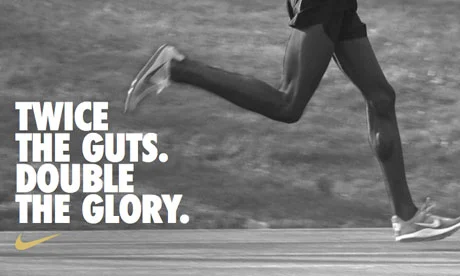10 Branding Questions Every Business Owner Should Answer
Branding is more than a logo. A successful brand has a voice, a purpose, personality and a distinct style. A brand is a feeling and an experience for your clients.
Before you leap into choosing pretty colors and fun icons, you need to answer the tough questions. It’s important to establish a direction for your company in order to create a brand identity that meets your needs.
Each of my branding clients are asked to answer these 10 questions prior to the start of their project. I encourage you to consider your answers to these questions as well, especially if you’re considering investing in a branding package.
1 | What is the story behind your company and why did you start a business?
If you want your brand to tell your story, you should be able to tell it with words first. The designer who works on your branding will need to hear your background and the heart behind your company, in order to gain inspiration for your project.
It’s important to write out your story. Being able to convey why you started your business will help others to believe in your mission as well.
You can read my story here.
2 | What is the purpose of your company? What service do you provide?
I have seen this conversation play out so many times:
Other: “What do you do?”
Me: “I’m a graphic designer.”
Other: “Oh cool! What kind of stuff do you design?”
For a while, I didn’t have a good answer. I would say, “Oh anything really,” and I would start rambling off all sorts of things. Most the time this muddied the waters even more for the person asking.
I now have a very clear direction for my company and a mission statement that helps me clearly explain what I do.
“I am a branding and website designer for entrepreneurs. I focus on creating authentic, efficient designs for my clients, and I provide helpful tools and resources through my blog and social media platforms.”
If you have a hard time describing what you do for others, you can’t expect them to understand—let alone potentially purchase—your offerings.
Take some time to think about the purpose of your company and what services you provide.
3 | Who is your ideal client?
Identifying your ideal client is one of the single-most important steps in growing your business. Once you know who you’re trying to reach, you can conduct research on your target audience and learn important things about them. If you can determine what they like and don’t like, which social media platforms they use, what their biggest hangups and frustrations are, you can then learn how to reach them and tailor your marketing strategies to meet their needs.
Knowing your ideal client (age, gender, occupations, etc.) will help the designer create a brand that’s appealing to your client while also conveying to them who you are and what your company is about.
4 | What problems do you solve for your clients?
Every service-based business solves some sort of problem. Establishing what problems your ideal clients have will help you in creating packages and offerings that meet their needs.
Example:
Photographers solve the problem of capturing moments in time in a professional, beautiful way.
Event planners solve the problem of overwhelming stress involved with handling all the details of an event, so the client can relax and enjoy the day.
If you aren’t sure what problems your ideal clients have, ask them! It’s the quickest way to gain real, accurate insight about your target audience.
5 | Who are your competitors?
I’m a firm believer in less competition and more community. However, it’s important to know who your competition is. By determining your competitors, you can then determine what’s working or not working for them, and how you can develop a unique approach to a similar service.
If everyone in your industry is offering a certain service, you may need to offer it as well in order to be competitive. Or you may be able to meet the same need in a new, unique way.
Knowing what your competition is doing will help you make more educated decisions for your business. It will help you serve your clients better by being the most informed you can possibly be.
6 | What are 5 words that describe the personality and purpose of your business?
Most brand designers will ask you to describe your company in a few words. We do this because design decisions are not made on a whim, absent-mindedly. Each logo concept or color choice is made with thought and consideration of the words the client uses to portray their company.
It’s important you are able to describe your business in a way the designer can translate your words into visuals.
The words I use to describe Casi Long Design are:
Classic
Simple
Airy
Fresh
Authentic
7 | What other brands do you admire? Why?
This step is helpful in brainstorming your branding visuals. If you know what you like and why, it will help the designer to incorporate those things into your brand. It will also help you to determine what you want others to think and feel when they interact with your brand.
A few of my favorite brands are Fossil, Nike and Apple.
I love fossil because their products are well-made, affordable and recognizable. They have a unique look—rugged, yet feminine. They embody the distressed-jeans-and-heels look. When I think of Fossil, I think of working in a coffee shop, with folk/indie music in the background and my fossil bag sitting next to me. (This is, in fact, a real-life situation, but it seemed appropriate.) Practical, yet fashionable.
Nike is more about an emotion than anything. When I think of Nike, I think elite, reliable, champion, and innovative. They take pride in having the highest-quality and newest trends. Their commercials are always inspiring—making you feel like you can do anything you set your mind to, as long as you’re wearing Nikes.
8 | How do you want your client to describe their experience in working with you? (How do you make them feel?)
This relates to what we discussed in #7. You want your clients to feel a certain emotion when they come in contact with your brand.
Your client’s experience while working with you is based on several things.
Your interaction and communication with them.
Their user experience.
How easy is it for your clients to meet your expectations, get ahold of you, find their way around your site, understand the process, etc.
Your brand.
All the items your clients receive from you should be branded appropriately. You want to make sure all the “touches” they receive by your brand are positive ones.
Your service and/or final product.
Think about what you want your clients to say in a testimonial after completing a project with you. Now use that ideal testimonial to shape your customer service and communication strategy.
You can utilize your branding to create the ideal experience for your clients.
Example:
If it’s important for you to send handwritten notes to your client, you know you will need custom stationery to add a personal touch.
If you want to make the on-boarding process clear and professional, you may want to include a well-designed welcome package or a custom page on your website in your branding package.
9 | What makes your company unique?
With the number of entrepreneurs increasing, the market is saturated with plenty of other people doing the same thing you are. The way to make your business succeed is to offer a unique perspective.
You have to do something other people aren’t doing.
This doesn’t mean you need to think up an entirely new concept, but you could use a slightly different approach. Maybe you communicate with your clients via Facetime instead of email. Or you deliver your client’s final product in a unique way.
Finding some way to set your company the slightest bit apart will help. Using this method in your branding is also a helpful way to catch people’s attention and hopefully their business.
10 | What growth do you expect for your company in the next 3-5 years?
When you’re branding your company, you want to establish an aesthetic that will last several years and leave room for growth. Branding a company is a large undertaking, so try and avoid rebranding every year or two.
To make sure your new brand has longevity and room to grow, think about where you want your business to be in 3 or 5 years. Do you want to expand into webinars, coaching, or online teaching courses? Or maybe you hope to offer printed, physical products. You may want to think about packaging options when creating your brand.
You need to think about all the possibilities you hope to achieve in the future, so you can incorporate those items into your branding package now.
I encourage you to consider each of these questions when preparing for a new brand.
What are some of your favorite brands and why?



